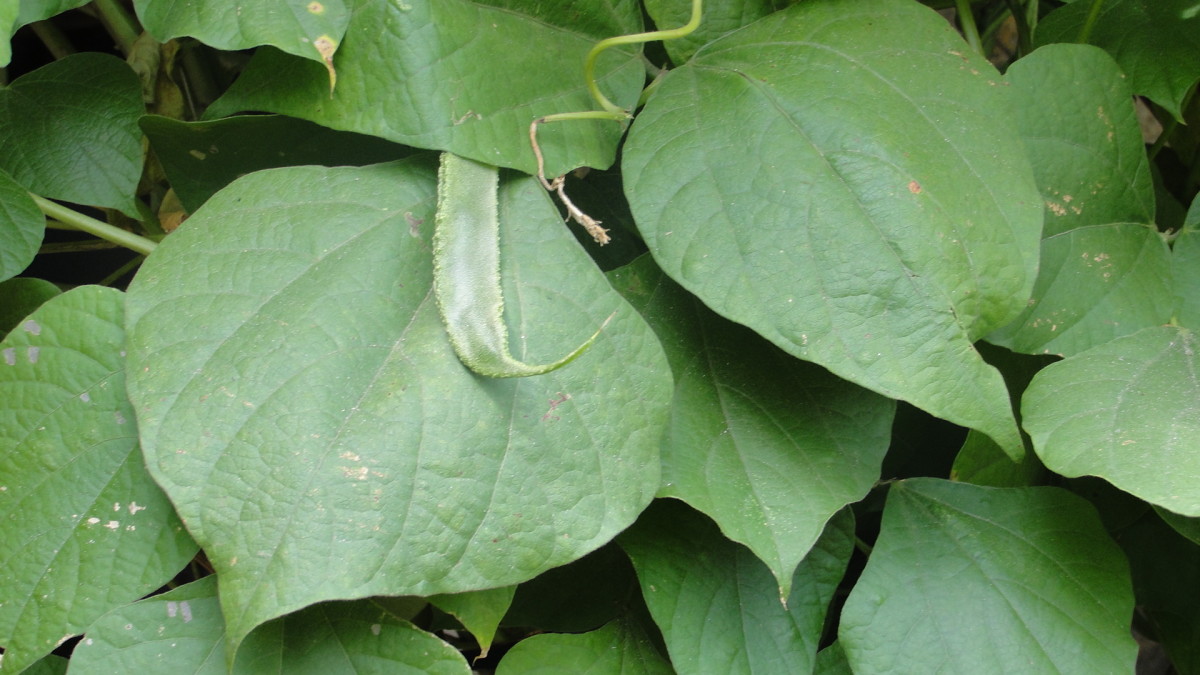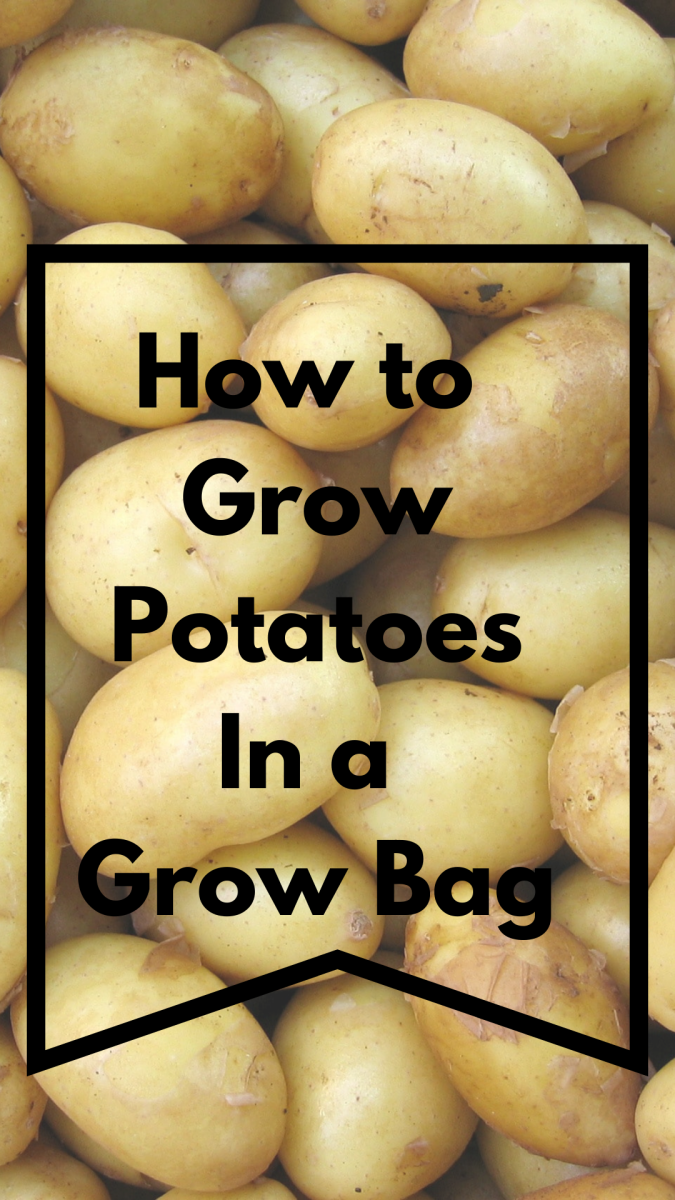Spring veggies, what to plant first
Spring Peas and Chives
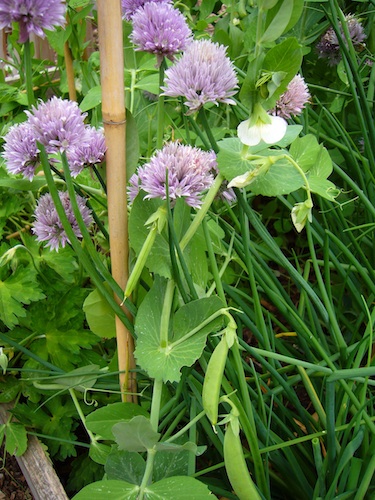
First in the garden
What do you plant first? Check the calender and choose a sunny spot for the vegetable garden.
First Veggies
Onions - Late winter or very early spring, start seeds for all the allium family: bulb onions, leeks, scallions and shallots and chives. (Garlic is planted as a fall crop here. It went into the ground last October.)
Set out bulbing onion seedlings three weeks before your last frost. Set out seedlings of non-bulbing onions (green onions and chives) six weeks before the last frost.
Peas and potatoes - The first things that should be planted are vegetables and herbs that are frost hardy. Mid March, or some time around St Patricks day, plant peas and potatoes. Not to worry if you missed this guideline. Anytime during cool weather, you can plant peas and potatoes.
You can plant white potatoes, specialty potatoes and fingerlings. For example, plant red or purple potatoes at the end of March. Do not plant sweet potatoes until all danger of frost is gone.
Choose baby carrots
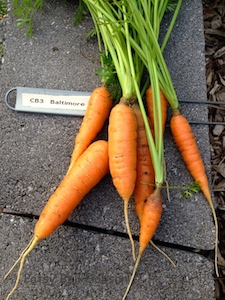
Grow a salad garden next
The first crops to come out of a spring garden are usually salad greens. These are called cool season crops. Choose a sunny location for the crops, even though the soil is still cool.
Plant "salad bowl" seeds, like lettuces, spinach, radishes and green onions. The cool season crops include "greens" like spinach, kale, chard. All these vegetables thrive in cool weather. So, plant them as early as you can and as late as you dare.
Hot weather is the enemy of these cool season crops. As the spring warms up, spinach, chard and kale can take more heat than lettuces. Usually lettuces will "bolt", or go to seed, when the weather turns hot.
Plant the warm season vegetables in the same spot where the peas, lettuces and radishes have grown. Tomatoes, peppers and eggplant must have warm soil to thrive. Tomato plants can go in the garden when the soil temperatures are above 60 degrees F.
You must have warm soil for beans, corn and squash to thrive. These crops will grow best when directly seeded into the garden. If you are growing tomatoes, peppers or eggplant from seed, start these crops indoors.
Transplant the indoor-grown warm season plants into the garden after the cool season crops are harvested. These guidelines are based on an average last frost date in mid April. Check for your last Freeze/Frost dates before planting.
Baby butterhead lettuce
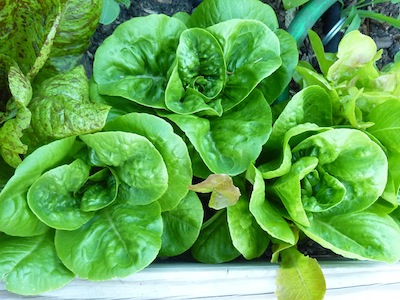
Plant a little lettuce
You can buy starter plants but the variety is limited. Lettuce seed is easy to grow and the selection is unlimited.
Unless you have a booth at the local farmers market, do not plant a full row of lettuce. Just because you have a new packet of lettuce (and there are hundreds of seed in there) doesn't mean you should plant the entire contents.
Experiment. Grow a variety of lettuces. This is the best way to learn what kinds of lettuce you like and what types do best in your garden. Those pricey Mixed Spring Greens at the restaurant, will cost pennies fresh from your garden.
Plant one to three feet of lettuce and sprinkle in a few radish seed. Plant radish at the beginning and end of each partial row. Radish is quick to germinate, making them your edible row markers.
Every week, plant a few more feet of mixed lettuces. I love garden fresh salads. Add little red and pink globes of young radish and thin, tender spring onions and you've got a blissful bowl of Baby Greens worthy of any 5 Star restaurant.
Plant a short row of spinach every two weeks for as long as cool weather continues. Plant chard, and kale, perhaps a few turnip seed and a nasturtium or two, using radish as row markers.
Did you buy enough seed?
Save extra lettuce, spinach, kale, radish seed to plant again in the fall. Plant a second crop of turnips, carrots, beets and chard when cool weather returns.
Thin kale, lettuce, radishes, chard and onions
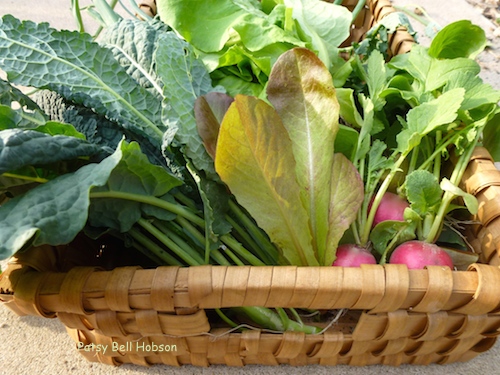
What's next?
Next, plant the warm season vegetables in the same spot where the peas, lettuces and radishes have grown. Tomatoes, peppers and eggplant must have warm soil to thrive. Tomato plants can go in the garden when the soil temperatures are above 60° F.
Next, you must have warm soil for beans, corn and squash to thrive. These crops will grow best when directly seeded into the garden. If you are growing tomatoes, peppers or eggplant from seed, start these crops indoors.
Next, transplant the indoor-grown warm season plants into the garden after the cool season crops are harvested. These guidelines are based on an average last frost date in mid April. Check for your last Freeze/Frost dates before planting.
Never leave soil bare
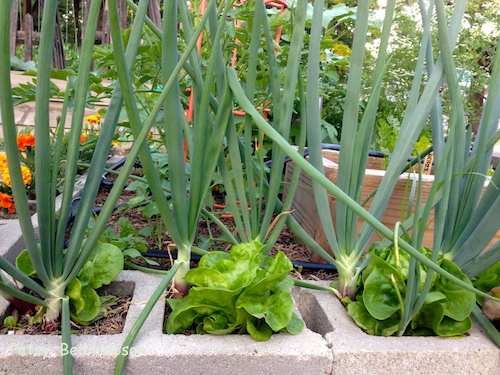
You might also like
Baby greens are expensive, costing more than bigger vegetables. But not in your back yard: How to Grow Your Own Baby Greens You grew the perfect salad, Use only your exclusive dressing recipes on such beautiful and tasty salads. Making tarragon vinegar

